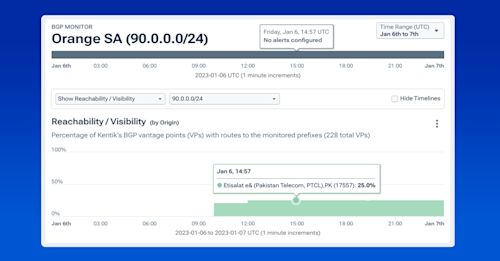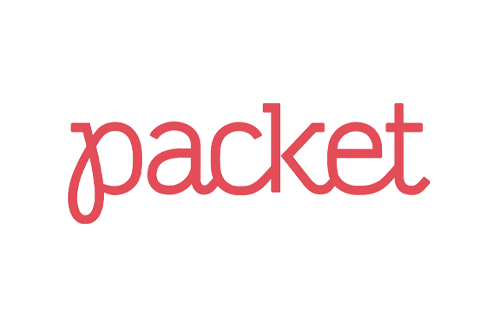Why Network Traffic Visibility is Crucial for Managed Service Providers


Summary
Today’s MSPs frequently find themselves without the insights needed to answer customer questions about network performance and security. To maintain customer confidence, MSPs need answers that they can only get by pairing infrastructure visibility with traffic analysis. In this post, guest contributor Alex Hoff of Auvik Networks explains how a solution combining those capabilities enables MSPs to win based on customer service.
Don’t come up empty-handed when clients ask questions

And yet, “I don’t know” is an answer that many MSPs must currently give to one of the most common client questions of all: Why is my Internet slow?
This is where infrastructure visibility paired with network traffic analysis can save the customer experience.
Finding the answers—fast
Using a network monitoring tool that focuses on infrastructure devices, you can easily identify bandwidth bottlenecks. For example, you might see that a client’s daily peak Internet usage is 20MBps and it’s choking the network. But is that a real capacity problem—or is it an inappropriate use of resources?
Flow analytics and reporting can tell you that two IP addresses are streaming Pandora all day, another IP address is torrenting software, and yet another is using Netflix. But those analytics can’t immediately tell you who’s using those IP addresses.
Combining network details with flow analytics gets you answers for your client.
Combine the network infrastructure details with flow analytics and in seconds you have answers for your client: Danny and Patricia stream Spotify, Darren is torrenting software. Oh, and Jessica loves her Netflix over lunch hour.
Non-IT executives often don’t understand the nuts and bolts of network management, so it can be hard to demonstrate your value in a way that makes sense to them. But output a quick report on the top 10 bandwidth users in their environment—and why they’re the top 10—and suddenly you’re talking their language. They get it.
Identifying the right solutions at the right time
Having clear insight into network traffic issues also gives you the intel you need to serve as the value-add partner you were hired to be. If you uncover that Spotify and Netflix are the issues, you can recommend implementing some corporate policies about what users can and can’t do on the network.
Clear insight into traffic gives you the intel you need to add value.
If there truly is a network capacity issue, then you’ll know that too. Traffic trends over time can point to gear or connections that will need an upgrade—and when they’ll need it.
Planning ahead to maintain capacity and smooth network performance? That’s a great customer experience. Advance notice to allow for budgeting of infrastructure upgrades? That’s a great customer experience, too.
Conversely, flow data and infrastructure visibility might show you equipment that’s not being used, or not being used efficiently. A configuration change or the removal of gear that’s outlived its usefulness might help squeeze more from the existing network. In that case, you might be able to point to cost-savings or improved performance—more customer experience wins.
Shoring up security
As data breaches and ransomware attacks make the daily news, security is fast becoming a growth area for managed services. A 2015 report from CompTIA showed that 38% of companies chose to hire an MSP primarily because of security concerns.
38% of companies hire an MSP primarily because of security concerns.
Security threats come in many forms. They range from malware and phishing to DoS attacks and backdoor infiltration of a network. Here again, infrastructure visibility combined with traffic analysis is a great way to problem-solve.
For example, an analysis of network traffic might show connections on an unusual port to an unknown host. This could signal the presence of a Trojan hiding somewhere deep inside a client’s network. To find it, you need to map the unusual traffic in question to the device that’s generating it.
And when it comes to security, you often don’t have time to play around. In the case of a DoS attack, for instance, you need to know immediately where the attack is coming from so you can use your firewalls and routers to block it before it takes services down. For that, real-time visibility is a must.
The bottom line
By 2020, it’s expected that customer experience will overtake price and product as the key brand differentiator across all industries. This is already true in managed services.
Competition is intense. Winning comes down to customer service.
With MSPs multiplying and increased pressure from value-added resellers (VARs) entering the market, competition is intense. But price is not the way to win. It comes down to customer service.
Service that resolves problems quickly with minimal interruption to the customer.
Service that identifies and fixes problems before the customer even knows about them.
Service that has a prompt, specific, and helpful answer to any question the customer might ask.
When it comes to the network, infrastructure visibility and traffic analytics help you deliver.
Alex Hoff is vice-president of product management at Auvik Networks. Auvik’s cloud-based RMM system for network infrastructure helps MSPs build a complete and profitable network service.


